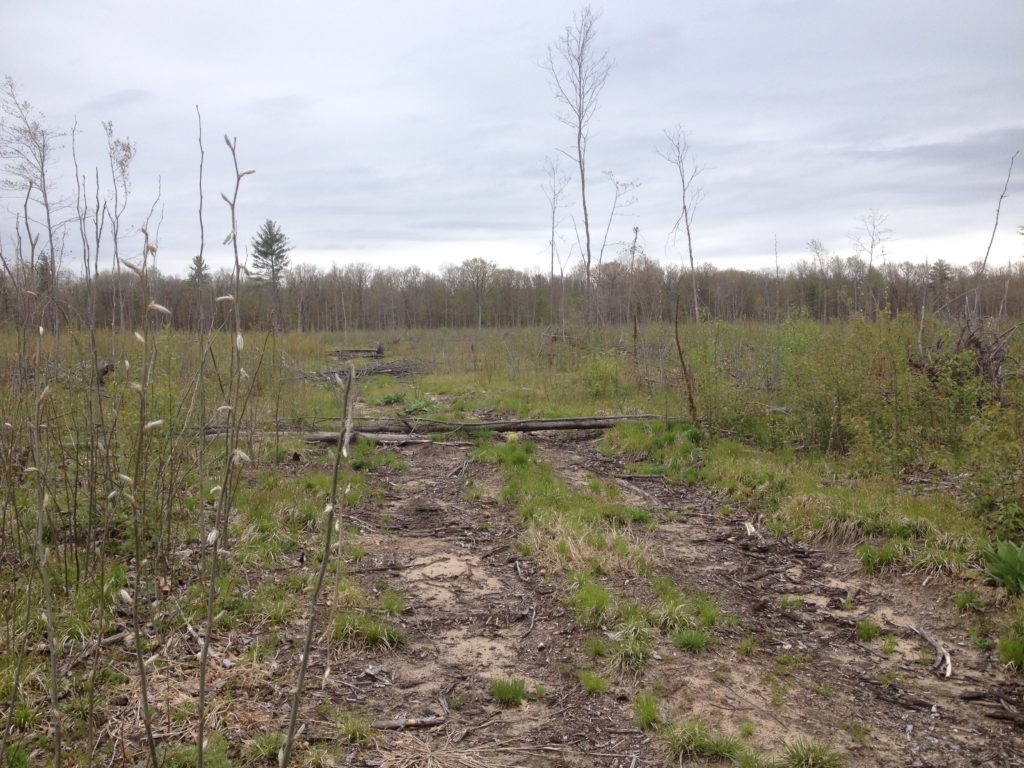
HABITAT PROJECT OPPORTUNITIES AT THE MUSKEGON SGA
This upcoming weekend, volunteers with MUCC’s Wildlife Habitat Program will be improving habitat in the Pigeon River Country State Forest and the Muskegon State Game Area. On Saturday, May 14th, at 12:30 pm in the Pigeon River Country State Forest, volunteers will be cutting down encroaching timber to restore a wildlife opening. On Sunday, May 15th, at 10 am in the Muskegon State Game Area, volunteers will be planting white pine trees to provide thermal cover for whitetail deer, turkey, and other wildlife.
See more details and RSVP to volunteer for wildlife here:
May 14th Pigeon River Country at 12:30pm
 I’m very familiar with the Pigeon River Country State Forest as I grew up camping, hiking, biking, and hunting there; but I am not so familiar with the Muskegon State Game Area. I spent the day yesterday touring the Muskegon SGA with Greg Hochstetler, the areas DNR Wildlife Technician. We looked at the project site where volunteers will be planting white pines this Sunday as well as a few potential future project sites. Much to my surprise, some of the areas reminded me of the Pigeon River Country. Greg pointed out the sweet fern and reminisced about his time spent working with the Atlanta DNR in the Pigeon River Country. There are some pretty great opportunities for habitat improvement projects in the future- check in at www.mucc.org/ontheground to see updated projects for this year. One potential project for this season is in a recent timber sale that has first season aspen regenerating. The aspen is regenerating really well but needs a little assistance where the logging road remains.
I’m very familiar with the Pigeon River Country State Forest as I grew up camping, hiking, biking, and hunting there; but I am not so familiar with the Muskegon State Game Area. I spent the day yesterday touring the Muskegon SGA with Greg Hochstetler, the areas DNR Wildlife Technician. We looked at the project site where volunteers will be planting white pines this Sunday as well as a few potential future project sites. Much to my surprise, some of the areas reminded me of the Pigeon River Country. Greg pointed out the sweet fern and reminisced about his time spent working with the Atlanta DNR in the Pigeon River Country. There are some pretty great opportunities for habitat improvement projects in the future- check in at www.mucc.org/ontheground to see updated projects for this year. One potential project for this season is in a recent timber sale that has first season aspen regenerating. The aspen is regenerating really well but needs a little assistance where the logging road remains.

There are a few other unique aspects of the Muskegon State Game Area that pose the potential for future habitat projects. The Muskegon SGA is home to rare sites of oak-pine barrens, an imperiled community type with fewer than twenty occurrences in the state. Information on these sites prepared by Jesse Lincoln from his work with Michigan Natural Features Inventory provides the DNR Wildlife Division with detailed project justifications, goals, and recommendations to protect and expand these rare savanna and prairie-type habitats. Wildlife such as deer, eastern turkey, grouse, woodcock, and cottontail rabbits will benefit from these projects as well as maintaining the biodiversity of the area and protecting rare native plants.

